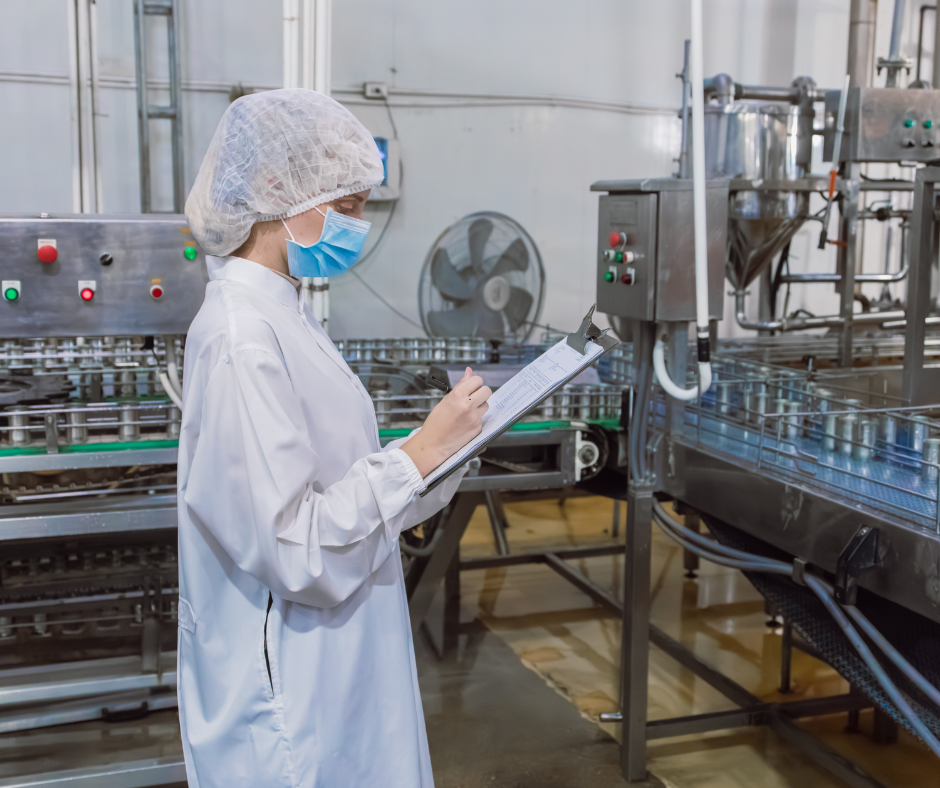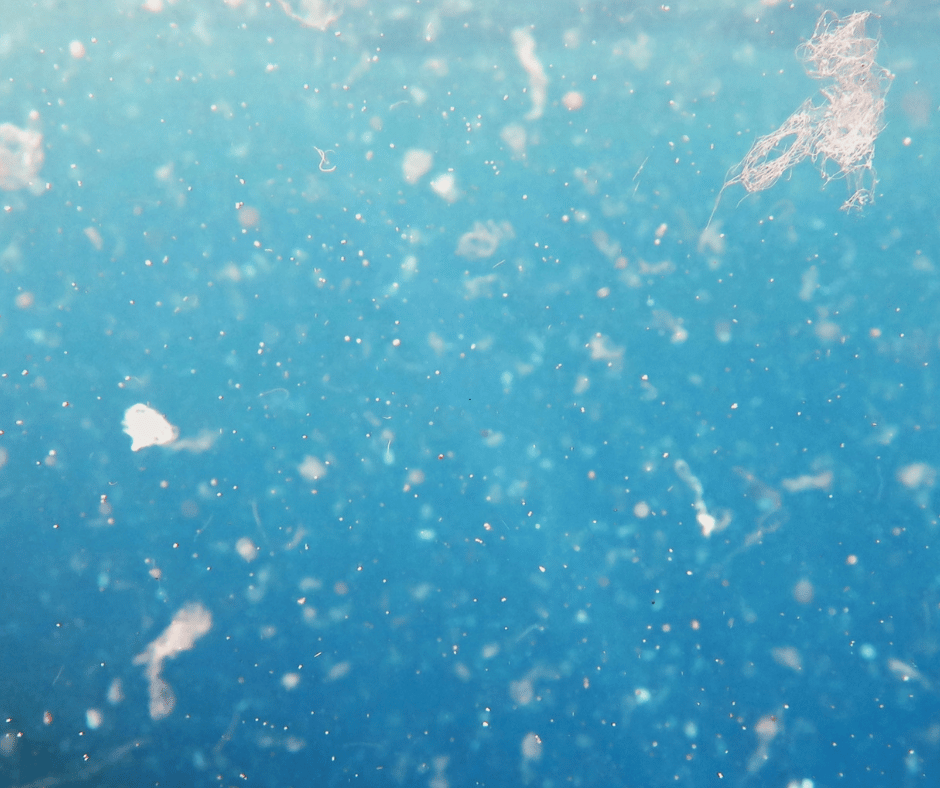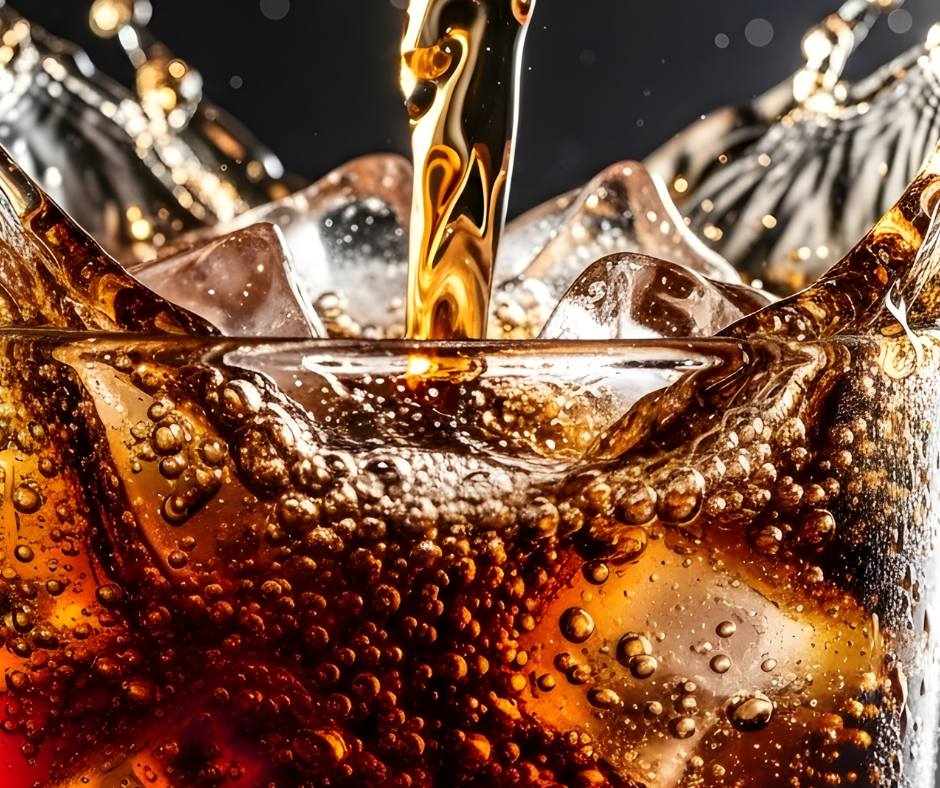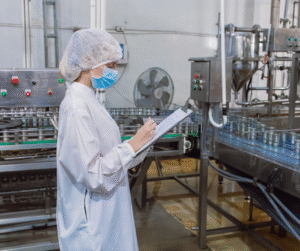How do you reduce CO₂ emissions without ruining pour quality or adding costs to your drinks operation?
For breweries, soft drink manufacturers and hospitality venues, that’s the ongoing challenge. You need consistent carbonation and reliable dispense performance — but every cylinder swap, leak, or poor filtration adds to your waste, emissions, and energy bills.
This guide is here to help. Whether you manage production or operations, you’ll learn how to reduce CO₂ levels without compromising quality. We’ll walk you through the causes of waste, the environmental impact of inefficient gas systems, and the practical steps you can take to make your setup cleaner and more efficient.
You’ll also discover how Sure Purity’s innovative filtration systems offer a low-waste, low-emission alternative to traditional CO₂ purification. This isn’t just about cutting carbon. It’s about cleaner gas, better drinks, and smarter systems.
In this guide, you’ll learn:
- Why CO₂ control matters for drinks quality and environmental performance
- Common causes of waste in gas systems
- The impact of poor CO₂ management on business and the planet
- How Sure Purity’s technology reduces waste and improves purity
- Practical steps to reduce emissions in your beverage operation
Let’s explore how you can keep CO₂ levels down — and your quality, efficiency, and sustainability up.
Why CO₂ Control Matters in the Drinks Industry
CO₂ is essential to how drinks are made, stored, and served. It carbonates beer and soft drinks. It pushes beverages from kegs to taps. It even protects flavour and freshness during bottling and packaging.
But while CO₂ plays a vital role, poor control over how it’s used or sourced can create major problems — for product quality, cost-efficiency, and the environment.
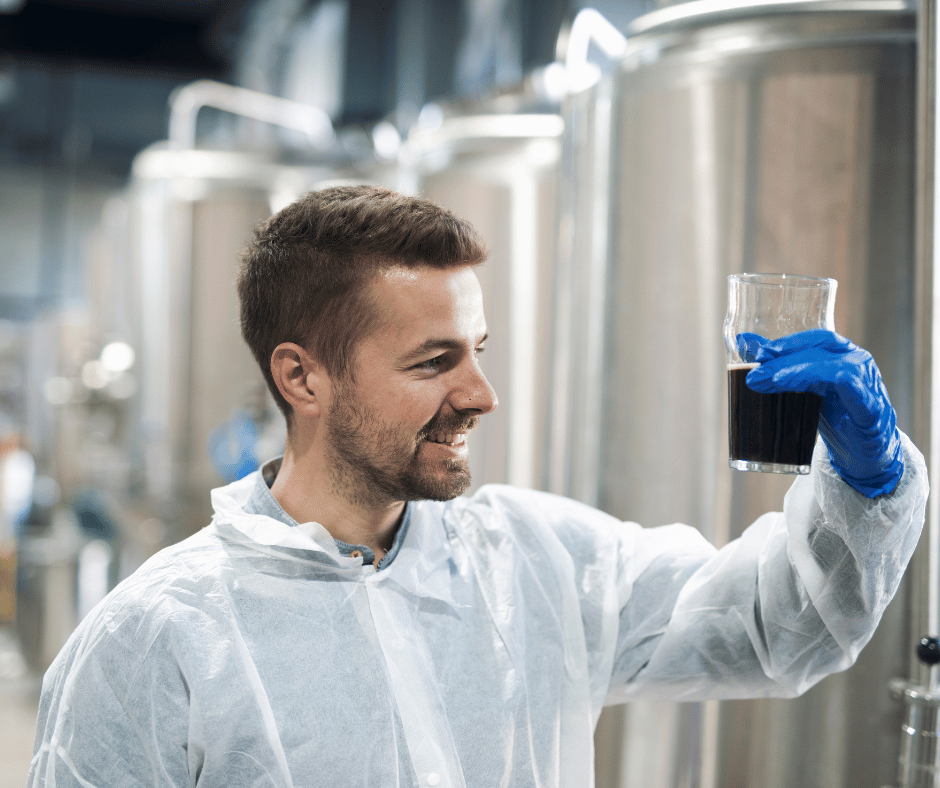
CO₂ in Beverage Production and Dispense
In most drinks operations, CO₂ supports three key functions:
- Carbonation – Adds sparkle and improves mouthfeel in beer, cider, and soft drinks
- Pressurised Dispense – Moves product through draught systems, ensuring a consistent pour
- Packaging Atmosphere – Prevents oxidation during bottling and kegging
Every step relies on gas pressure, purity, and delivery systems working in sync. If the CO₂ is contaminated, incorrectly pressurised, or wasted, the results can include:
- Off-flavours or flat beer
- Over-carbonated or foamy pours
- Product loss and increased wastage
- Higher costs from inefficient gas use
- Greater emissions from excess purification or leakage
The Environmental Cost of Poor CO₂ Management
Controlling CO₂ isn’t just about drinks quality. It’s also about carbon footprint.
- CO₂ production and transport emit greenhouse gases.
- Re-purifying low-grade gas consumes large amounts of energy and generates solid waste.
- Leaks and venting contribute to unnecessary emissions.
Even food-grade CO₂ has an environmental cost if handled inefficiently. Every wasted cylinder or over-purified batch adds to your operation’s GHG emissions — and undermines sustainability targets.
Balancing Quality with Sustainability
Many producers feel caught between two pressures: maintaining high-quality product standards while reducing their carbon footprint. But it doesn’t have to be a trade-off.
With smarter gas control, including high-efficiency filtration at the point of use, it’s possible to lower emissions and reduce waste without affecting performance. It’s a win-win — better quality, lower impact.
Sure Purity’s mission supports exactly that: helping beverage producers and hospitality teams meet their sustainability goals through cleaner, smarter CO₂ systems.
Common Causes of High CO₂ Waste in Beverage Production
CO₂ waste is one of the most overlooked inefficiencies in drinks production. Whether in a brewery, bottling plant, or bar, poor gas management can lead to unnecessary loss — costing time, money, and sustainability points.
Below are the most common sources of CO₂ system loss and gas waste in breweries and hospitality settings.
Gas Leaks from Fittings, Regulators or Lines
Small leaks add up quickly. Poorly fitted regulators, loose clamps, or cracked gas lines can result in steady CO₂ loss — often without being noticed. In busy environments like pubs or production lines, these leaks may persist for weeks.
Example:
A mid-sized brewery running multiple draught lines loses over 10% of its gas each month due to undetected fitting leaks. That’s wasted CO₂, higher emissions, and extra cost.
Over-Carbonation and Venting
Over-carbonating beer or cider during kegging and bottling forces excess gas to be released. This not only creates waste but also risks inconsistent flavour and foam.
Example:
Inconsistent carbonation during small-batch bottling causes venting. Each batch may lose several litres of gas unnecessarily — especially when adjusting pressure manually.
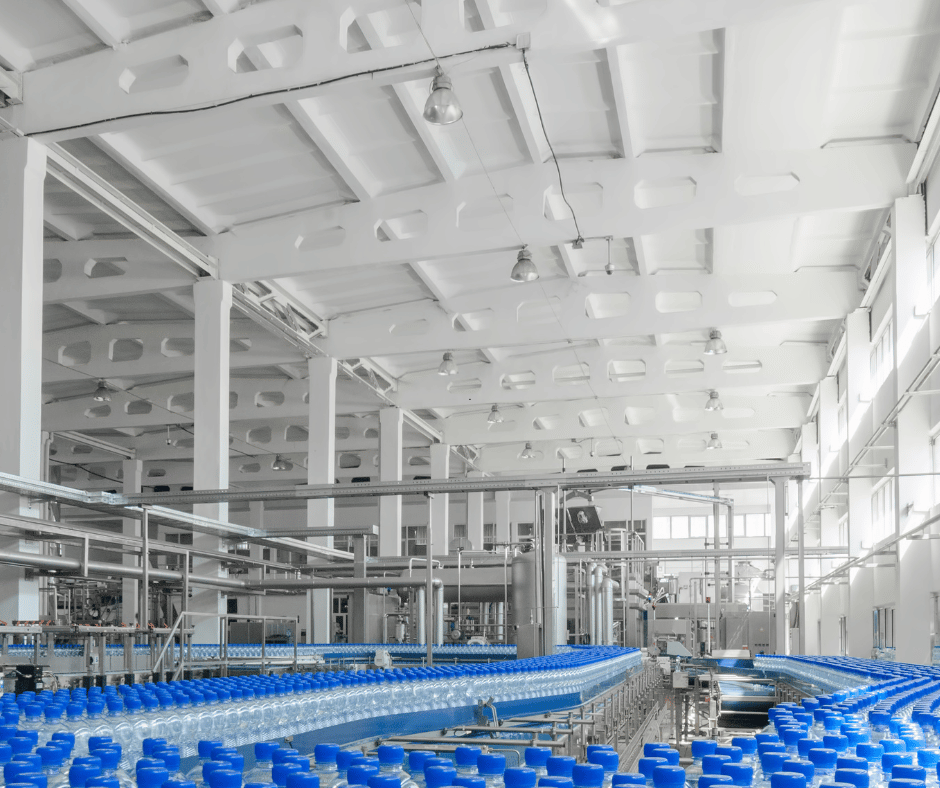
Low-Quality CO₂ Requiring Repurification
If your supply gas is low grade or contaminated, you may be forced to reprocess it before use. This adds to your carbon footprint and generates solid waste — particularly with traditional purification systems.
Example:
Soft drinks producers using impure CO₂ often run their gas through energy-intensive scrubbers. This adds labour, cost, and energy use — all for gas that should be ready out of the bottle.
Inefficient or Outdated Filtration Equipment
Outdated filtration systems struggle to remove harmful impurities like benzene, sulphur compounds or water vapour. These contaminants can taint flavour and damage dispense systems, leading to waste and maintenance downtime.
Example:
An older bar setup uses an inline filter that hasn’t been serviced in years. It fails to block moisture, causing build-up in lines and spoiled beer kegs.
CO₂ Loss During Transport and Storage
Poor storage conditions, incorrect cylinder handling, and long transit distances all lead to gas loss. Cylinders stored in high heat can vent gas through pressure relief valves — sometimes silently and unnoticed.
Example:
Restaurants storing CO₂ tanks near hot kitchens lose gas to pressure relief, meaning more frequent cylinder replacements and higher emissions per pint served.
Environmental & Business Impact of Poor CO₂ Management
Wasted CO₂ doesn’t just vanish. It leaves a mark on both the environment and your bottom line. Poor gas management in beverage production leads to more than operational inefficiency. It increases emissions, drains resources, and damages brand reputation.
Higher Emissions and Carbon Footprint
Every kilogram of lost or vented CO₂ adds to your organisation’s carbon output. For breweries and bottling plants under pressure to meet ESG goals and net zero targets, unmanaged gas systems can quickly become a liability.
According to the UK Government’s DEFRA emission factors, vented CO₂ contributes directly to greenhouse gas emissions. If you’re losing 10kg of gas a week, that’s over 500kg of CO₂ equivalent released annually — per system.
Unnecessary Energy Use
CO₂ doesn’t arrive pure and ready by accident. Energy is used at every stage — during production, purification, compression, and transport. When gas is wasted due to leaks, poor filtration, or over-carbonation, so is the energy behind it.
Key point:
Every time you repurify or replace gas, you’re adding to your energy bill and environmental footprint — even if that waste is invisible.
Increased Operational Costs
Poor gas control means more frequent cylinder swaps, higher purchasing costs, and avoidable losses during production runs. These inefficiencies often go unnoticed because they’re not tracked like electricity or raw ingredients.
Example:
A small hospitality chain discovered that inconsistent pressure settings and poor gas storage were costing them over £3,000 annually in lost CO₂.
Quality Problems Lead to Product Waste
Gas isn’t just for pushing beer to the tap — it affects carbonation, mouthfeel, and foam. Contaminated or unstable CO₂ leads to spoilage, foaming issues, and product recalls. That’s lost stock and lost revenue.
Example:
Carbonated soft drinks with tainted CO₂ show strange odours or off-flavours. This results in full batch disposal, customer complaints, and damage to brand trust.
Reputational Risk
Today’s consumers and procurement teams are highly tuned to sustainability. Brands that can’t show control over their emissions or waste face growing scrutiny — not only from customers, but from supply chain partners and investors.
The Carbon Trust highlights CO₂ reduction as one of the key metrics in sustainable food and drink production. Failure to address inefficiencies in gas systems can raise red flags when tendering for contracts or certification.
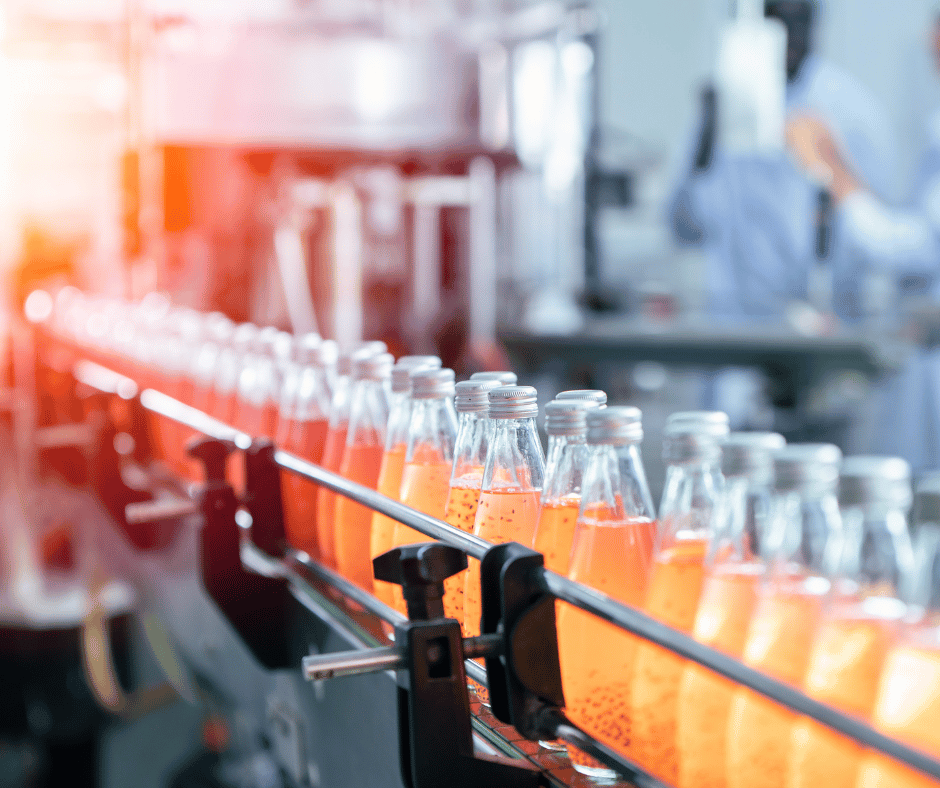
Smarter CO₂ Filtration: A Cleaner Alternative to Traditional Methods
Reducing CO₂ waste starts with better gas quality — and that’s where smarter filtration comes in. Traditional gas purification methods are not only energy-intensive, but also produce large amounts of solid chemical waste. In fact, some techniques can generate over 50% waste by volume, adding to disposal costs and environmental impact.
At Sure Purity, we offer a cleaner, more efficient solution.
In-Line CO₂ Filtration That Eliminates the Waste
Unlike cryogenic separation or chemical scrubbing, our Carboguard filtration systems work at the point of use. They remove harmful impurities from CO₂ gas — including benzene, hydrogen sulphide, sulphur compounds, and moisture — without the by-products and waste associated with traditional purification.
The result?
Food-grade CO₂ that meets EIGA and ISBT standards — delivered without excess energy use or environmental harm.
Lower Waste, Higher Efficiency
Sure Purity’s in-line filtration eliminates the need for repeated gas treatment. Once filtered, the gas is clean and ready for use. Whether you’re carbonating soft drinks, running draught beer lines, or bottling at scale.
Key sustainability benefits include:
- Zero solid waste output during filtration
- Reduced need for repurification or venting
- Extended equipment lifespan due to fewer impurities
- No chemical residue or storage of hazardous materials
Less Maintenance, Fewer Disruptions
Because Sure Purity’s filters trap contaminants before they enter the system, operators see fewer blockages, less foaming, and more stable carbonation. This also means fewer production stoppages and reduced maintenance cycles.
For breweries and beverage plants, this translates to consistent pour quality and lower cost per litre dispensed.
Cleaner Gas = Better Product, Less Energy
Cleaner gas isn’t just good for the planet — it protects the flavour, clarity, and mouthfeel of your drink. It also means systems can run at optimal pressure without needing to overcompensate for low-grade gas.
The equation is simple: Cleaner gas = less energy, less waste, better beer.
How to Keep CO₂ Levels Down in Your Dispensing or Production Setup
Reducing CO₂ emissions in beverage dispensing doesn’t require a complete system overhaul. Small improvements in handling, maintenance, and filtration can significantly reduce gas loss, cut costs, and support sustainability goals.
Here’s a practical checklist to help hospitality managers, brewers, and beverage engineers keep CO₂ levels under control — without compromising quality.
Monitor and Maintain Correct Pressure Levels
Incorrect gas pressure is one of the most common causes of CO₂ waste. Too high, and you risk over-carbonation and excess foaming. Too low, and your drinks go flat, often triggering unnecessary venting and gas adjustments.
- Regularly check PSI or bar pressure against manufacturer guidelines
- Use pressure regulators and gauges to fine-tune gas flow
- Adjust pressure based on beverage type and temperature (e.g. beer, cider, soft drinks)
Stable pressure helps maintain consistent carbonation and reduces unnecessary CO₂ use.
Check for Leaks – and Fix Them Fast
Even minor leaks in fittings, hoses, or keg couplers can cause constant CO₂ loss over time. For busy bars or breweries, this adds up to significant waste.
- Install leak detection systems or perform regular manual tests using soapy water or gas sensors
- Inspect all connections, regulators, and seals as part of a weekly maintenance routine
- Replace faulty components promptly to prevent long-term inefficiency
Leakage is one of the most avoidable causes of gas waste in beverage systems.
Use Point-of-Use Gas Filtration
Filtering CO₂ at the point of dispense removes contaminants before they enter the product. It also reduces the need for repurification or venting due to off-flavours or foam instability.
Our Carboguard and Carboguard mini filters trap harmful impurities such as moisture, sulphur compounds, and benzene. Using our polishing filters means you can deliver food-grade CO₂ that protects drink quality and system efficiency.
- Install inline filtration units between cylinder and keg/tap
- Use certified filters that meet EIGA or ISBT standards
- Reduce system blockages and foaming with cleaner gas
This simple upgrade cuts waste and extends equipment life.
Store CO₂ Cylinders Properly
How you store your gas cylinders can affect pressure consistency and gas loss.
- Always store cylinders upright in a cool, well-ventilated area
- Avoid direct sunlight or excessive heat, which increases internal pressure and leads to venting
- Secure cylinders to prevent movement or accidental damage
Smart storage reduces unplanned gas release and keeps systems stable.
Train Staff in CO₂ Handling Best Practice
Poor handling during keg changes or system maintenance can lead to unnecessary CO₂ release.
- Train staff on proper keg tapping and untapping procedures
- Use slow, controlled venting methods when necessary
- Promote awareness of gas-saving techniques across teams
Operational knowledge helps reduce accidental waste and improves safety.
For Breweries: Consider CO₂ Recovery Systems
Larger-scale brewers can take an extra step by installing CO₂ recovery units. These systems capture the gas released during fermentation and reuse it in carbonation or packaging.
- Recover CO₂ from fermentation vessels
- Filter and compress gas for reuse in carbonation
- Reduce reliance on externally sourced CO₂ cylinders
This approach requires investment but significantly cuts emissions over time.
Connect It All Back to Purity
Each of these tips contributes to reducing CO₂ usage — but filtration remains a cornerstone. Sure Purity co2 filters don’t just protect drink quality; they help reduce gas waste, prevent repurification, and support sustainable beverage operations at every level.
Building a Sustainable Future for Beverage Gas Systems
Sustainability is no longer a side project, it’s a strategic priority. Across the drinks industry, pressure is rising to reduce emissions, cut waste, and demonstrate real progress on environmental targets.
That means looking closely at every part of your operation, including how you manage CO₂.
CO₂ Reduction Is Central to Modern Beverage Sustainability
From small hospitality venues to global beverage producers, gas systems play a critical role in both quality control and carbon reporting. CO₂ is essential to dispense and preserve drinks, but when mismanaged, it becomes a silent contributor to a larger footprint.
Reducing emissions from beverage gas systems is one of the most practical ways to improve environmental performance.
- Lower CO₂ use = fewer emissions and less energy consumed
- Better filtration = less waste and cleaner processes
- Stable systems = less venting and repurification
This isn’t just good for the planet. It’s good business.
ESG and Carbon Reporting Demand Better Gas System Oversight
Environmental, Social and Governance (ESG) reporting has become standard for suppliers, retailers, and producers. Whether you’re completing Scope 1 or Scope 3 emissions audits or working towards net-zero, CO₂ usage must be tracked and controlled.
Outdated or inefficient gas handling practices make these goals harder to reach.
- Unfiltered gas leads to more product loss and gas waste
- High-emission purification methods inflate your footprint
- Leaks and poor storage create untracked losses
By switching to smarter, low-waste CO₂ systems like those from Sure Purity, you build transparency and credibility into your sustainability reporting.
Technical Upgrades Offer Big Wins Without Disruption
Some businesses hesitate to change gas systems due to perceived complexity. But with the right partners and equipment, upgrades are fast and straightforward.
Sure Purity’s Carboguard CO₂ filtration systems are designed to integrate with existing setups — from draught beer lines to large bottling plants.
- Install inline with minimal downtime
- Reduce repurification and product waste instantly
- Meet EIGA and ISBT purity standards with ease
It’s a low-friction path to measurable CO₂ reduction in drinks industry operations.
Time to Rethink Your Beverage Gas Approach?
With consumers, regulators, and industry leaders demanding sustainability, every part of your operation should contribute to a greener outcome.
Ask yourself:
- Is your CO₂ usage efficient, or are you wasting gas?
- Could your system benefit from inline filtration?
- Are you meeting today’s expectations on emissions and purity?
If the answer isn’t clear, it’s time to evaluate. Sure Purity can help you identify gaps and implement cleaner, smarter solutions tailored to your setup.

